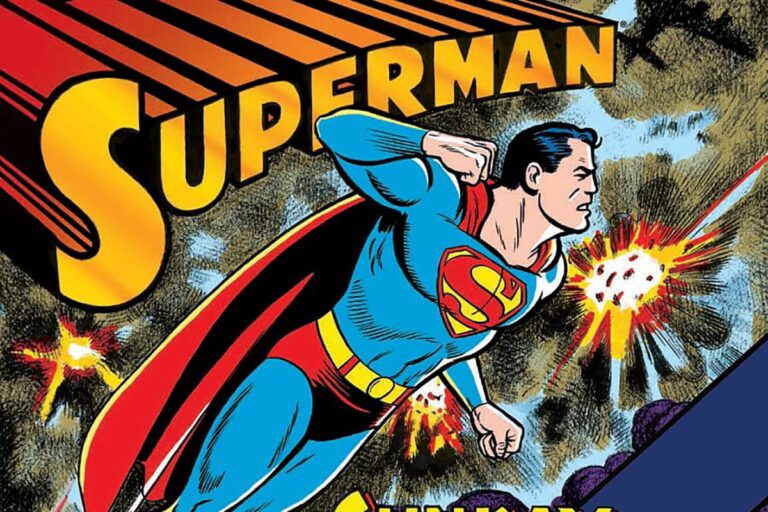
Comic books have been part of American culture since the 1840s, but the format we generally associate with them today really only emerged in the 1930s with what is known as the Golden Age of Comic Books.
This era (from 1938 – 1956) saw the rise of key Jewish figures who left a lasting impact on the industry, from writers who created some of the most famous comic books to the publishers who distributed them to mass audiences. These writers, artists and publishers skillfully infused their own personal narratives and values into their comics.
Here’s how these Jewish creatives — conceiving of Superman, Spider-Man, Wonder Woman, and other superheroes — shaped the comics industry in ways that continue to influence the stories we read and watch, 85 years later.
How did Jews even end up in comics?
First, let’s understand the backdrop. During the early 20th century, Jewish immigrants often faced exclusion from more established creative fields, like mainstream publishing houses or advertising agencies. They were attracted to more accessible and inclusive industries — one of which was the burgeoning comic book industry.
Even so, the comic book industry wasn’t an easy path for Jewish creators just getting started. The first comics were tiny strips in newspapers, and the publishing houses often took advantage of their Jewish writers, paying them very little.
In 1933, Maxwell Gaines, a Jewish print salesman, pioneered the comic book format as we know it today. In an effort to sell more newspapers, Gaines began reprinting collections of popular comic strips — typically humor or Western-themed.
At just 10 cents per booklet, these collections quickly became a hit. Gaines would later start All-American Publications, introducing popular characters like Wonder Woman (played by Israeli actress Gal Gadot in recent film adaptations) and The Flash.
The Jewish roots of the comic book industry
Jewish entrepreneurs played a significant role in shaping the early comic book industry. DC Comics (originally known as National Allied Publications) was founded in 1934. Three years later, it was acquired by two Jewish entrepreneurs from the Lower East Side, Harry Donenfeld and Jack Liebowitz.
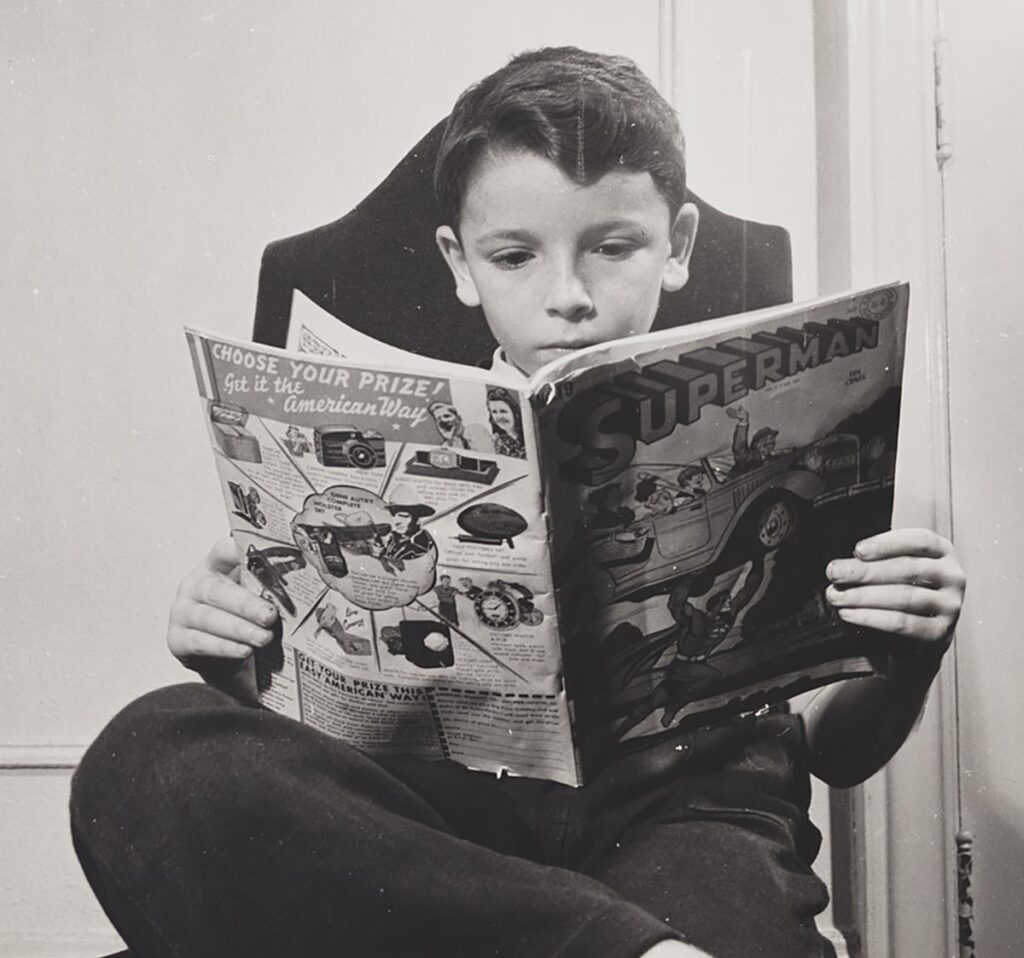
Donenfeld, a Romanian immigrant, made his living producing pulp magazines — inexpensive, popular works of fiction. As a favor to a long-standing client, he offered Liebowitz a role overseeing finances, forming a partnership that would profoundly shape both their lives.
Donenfeld and Liebowitz had also founded Independent News Company in 1932, a magazine and comic book distribution firm that would eventually evolve into the parent company of DC Comics.
In 1940, Independent News Company acquired National Allied Publications and merged with two other publishing companies, one of which was Gaines’ All-American Publications, forming what we know today as DC Comics.
These founding Jewish creators and their successors contributed greatly to the famed superheroes we see today, adorning everything from children’s backpacks to the big screen. To understand this, let’s delve into the origins of two iconic characters: Superman and Spider-Man.
The Jewish roots of Superman
The comic book industry really soared in 1938 with the release of Action Comics #1, introducing Superman. The character was created by Jerry Siegel and Joe Shuster, both of whom were the children of Jewish immigrants from Lithuania and the Netherlands.

Siegel and Shuster met in high school in Cleveland, Ohio, and quickly became friends, sharing a passion for science fiction and comic strips. In 1932, they collaborated on a short comic called “The Reign of the Superman” which led to the creation of Superman.
In 1938, Siegel and Shuster sold the rights to Superman to DC Comics for $130, a transaction that laid the groundwork for an enduring legacy as Superman’s popularity skyrocketed.

Siegel and Shuster subtly threaded Jewish roots throughout Superman’s character and backstory. The hero was a refugee with the Hebrew-inspired name Kal-El, interpreted by some as “the voice of God.” This name seemed fitting for a character using his superhuman powers to save lives and fight for justice.
According to Roy Schwartz, author of “Is Superman Circumcised: The Complete Jewish History of the World’s Greatest Hero,” Superman’s story also drew inspiration from the biblical narrative of Moses.
Just as Moses’ mother sent her infant son down the river in a basket to save him from the Egyptians, Superman’s parents sent him from his home planet, Krypton, to Earth to protect him from imminent destruction. Both heroes are discovered as infants and raised by foreign families.
The Jewish roots of Spider-Man
Much like Siegel and Shuster, another Jewish writer, Stan Lee, used his background to influence his creation of one of the most famous superheroes, Spider-Man.
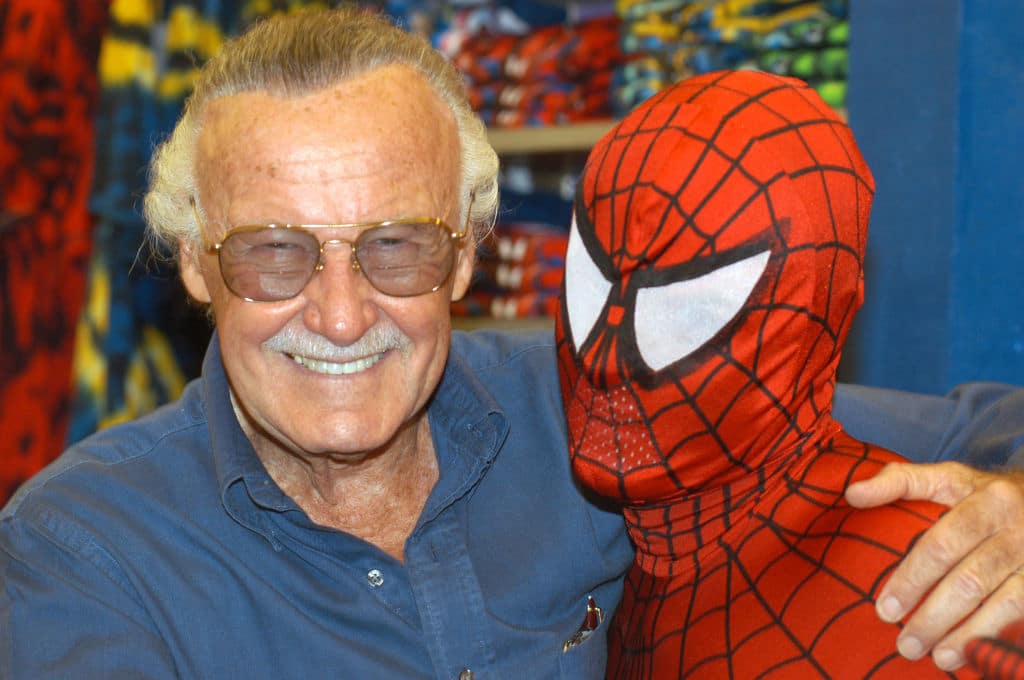
At the start of his career, Lee worked at Timely Comics, which later rebranded as Marvel, working under Joe Simon and Jack Kirby, two Jewish comic book creators who would go on to create Captain America. This early stage of his career, working with prominent Jewish creators, shaped his perspective and creative approach.
Raised in a predominantly Jewish neighborhood in the Bronx, Lee later adopted his pseudonym to avoid antisemitism within the comic book industry.
Lee’s Jewish upbringing is reflected in characters like Spider-Man. He said he wanted to infuse Spider-Man with what he saw as the essence of Jewish values, stating:
“To me, you can wrap all of Judaism up in one sentence, and that is, ‘do not do onto others.’ All I tried to do in my stories was show that there’s some innate goodness in the human condition.”
While Siegel and Shuster may have drawn on the story of Moses for Superman, Lee took inspiration from the complex character of King David for Spider-Man.
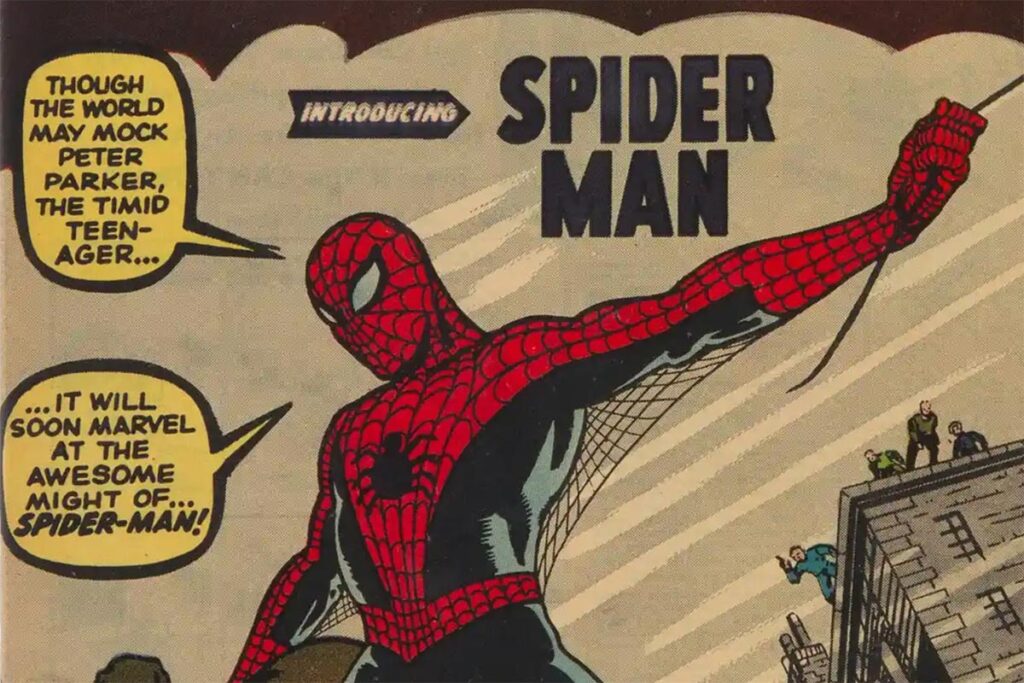
Spider-Man, like many of the characters Lee created (Hulk and the Fantastic Four, to name a few), never asked for powers — instead, they were thrust upon him.
When a radioactive spider bites his alter ego, Peter Parker, he gains superhuman strength, the ability to cling to walls, a heightened “Spidey-sense,” and more. He, like King David, is compelled to a higher calling by the gifts granted to him.
Telling the story of Jewish-American immigrants
So, we’ve seen how Jewish creators weaved Jewish values into their superheroes. But they did more than that. They also used their comics to tell the story of Jewish-American immigrants.
Considering the comic book industry was built largely by Jewish immigrants and their children, it’s only natural that their stories would reflect their own experiences. This is why, when you delve into the histories of comic book legends, you find a recurring theme: the Jewish immigrant narrative.
Take Jack Liebowitz, co-founder of DC Comics. He was from present-day Ukraine and grew up on the Lower East Side. Or consider Martin Goodman, the founder of Marvel, who was one of 17 children of Lithuanian immigrants. Both brought their unique immigrant perspectives into their comic books and the industry they helped to shape.
While their comics may not explicitly address Jewish immigration experiences, their stories embody themes of dual identity, assimilation, and being an outsider — characteristics that resonate with the experience of Jewish immigrants to America.
Take Superman, for example. Conceived by two children of Jewish immigrants and an immigrant himself, the Man of Steel leads a double life as Clark Kent and the superhero. He even wears a disguise — glasses and an unassuming demeanor — to blend into society.
As noted by cartoonist and author Jules Feffer in the New York Times Magazine, “It wasn’t Krypton that Superman came from; it was the planet Minsk or Lodz or Vilna or Warsaw.”
Superman’s story mirrors the experience of many Jewish immigrants in America who grappled with assimilating into American society while preserving their cultural heritage.
Their dual identities often manifested as speaking English publicly while still maintaining their mother tongue like Yiddish or Hebrew at home. Others “Americanized” and adopted American clothing styles to help them blend in with societal norms.
Fighting for justice as a Jewish value
In addition to being created by Jewish artists, characters like Captain America, Spider-Man and The Avengers have something else in common: they are committed to fighting the “bad guys” and making the world a better place through self-sacrifice and standing up for what’s right.
Consider Captain America, a Jewish-created superhero who champions justice. Created in 1940 by Joe Simon and Jack Kirby for Timely Comics as a direct response to Hitler gaining power, he is a symbol of patriotism and justice.
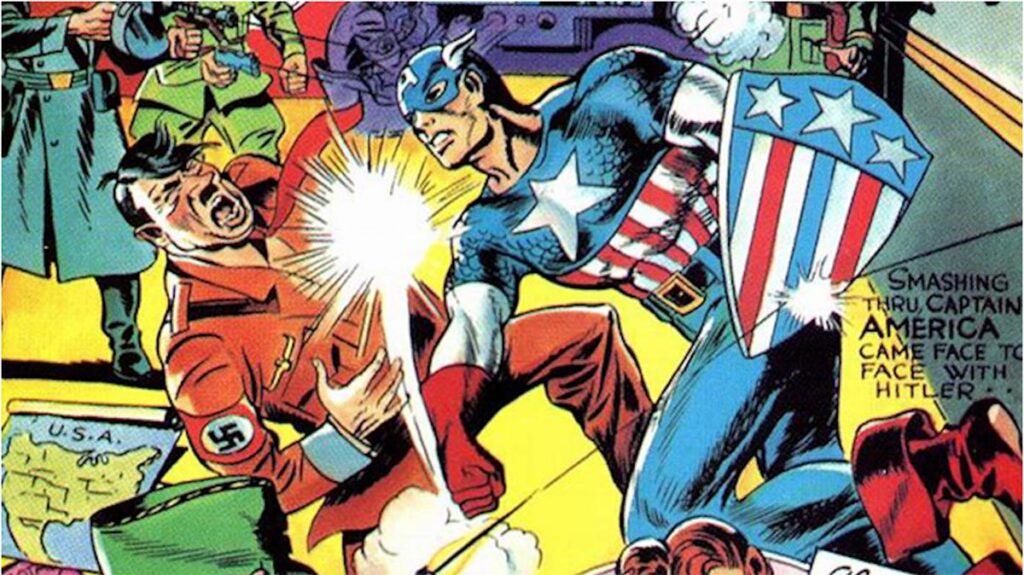
After army doctor Abraham Erskine injects him with a Super-Soldier Serum to gain enhanced physical powers, Captain America is able to punch Nazis and thwart their evil plans, embodying American — and Jewish — ideals of freedom and justice.
Even Batman — conceived in 1939 by Jewish creators Bob Kane and Bill Finger — has fought the foes of Jews.
In comics released during World War II, Batman’s creators envisioned him literally fighting the Nazis. In Batman #14, he busted up a Nazi spy ring, and on the cover of Batman #18, he is seen lighting a giant stick of dynamite in the faces of Hitler, Hirohito, and Mussolini.
Other comic book heroes fight justice on behalf of marginalized groups. The X-Men comics, created by Stan Lee and Jack Kirby during the Civil Rights Movement in 1963, feature five mutant friends with special powers who are often targeted for being different.
Comics and graphic novels as an educational tool
From fighting for justice in the face of great adversity, Jewish creators then found another medium in comics: education.
The 1970s witnessed the birth of a new genre in this space, graphic novels. Taking inspiration from comic books, these works were characterized by their longer, more complex story arcs. One of the most famous graphic novels is “Maus” by Jewish artist Art Spiegelman.
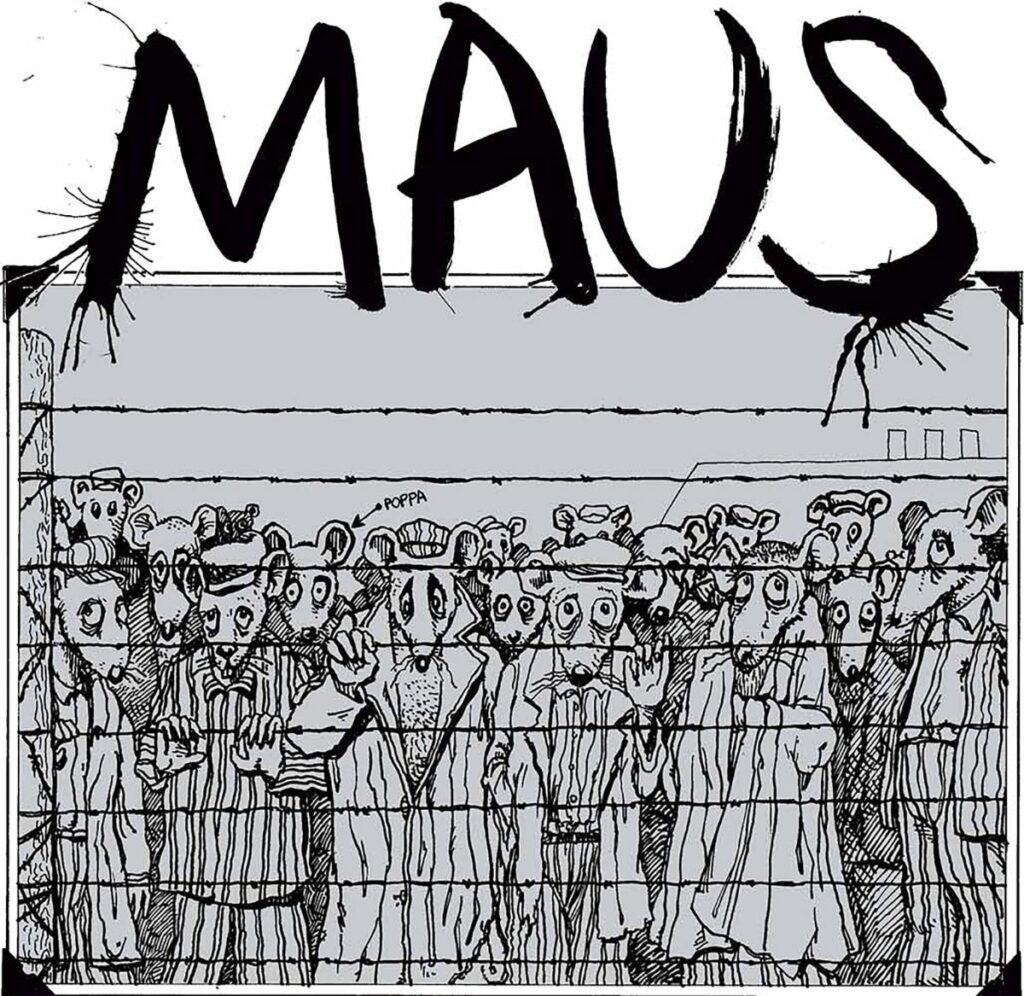
Spiegelman set out to preserve the stories of his father, a Polish Holocaust survivor, in creating “Maus,” which debuted in 1980. The series, which eventually expanded into a trilogy, tells his father’s stories through illustrated pages where Jews are portrayed as mice, and Germans and Poles as cats and pigs, respectively.
Initially as an educational tool for himself, “Maus” has played a critical role in Holocaust education, offering students a compelling insight into survivors’ personal experiences. It was also the first graphic novel to be awarded a Pulitzer Prize.
Recently, the book has been at the center of controversy, as it was banned by a Tennessee school board last year for having “rough, objectionable language.”
Banning “Maus” only proves how comic books and graphic novels are far from mere entertainment — they are powerful expressions of history, identity, and human resilience. They challenge societal norms and give voice to narratives that might otherwise remain silent.

Today, an ever-growing number of Jewish comic book creators and graphic novelists are not only continuing this rich tradition but also pushing the boundaries of the genre. Their works span a variety of Jewish themes, including Israel and Torah teachings. They have the trailblazing pioneers from the Golden Age of Comics to thank, who paved the way for these narratives to flourish.
Originally Published Jul 26, 2023 12:55PM EDT


